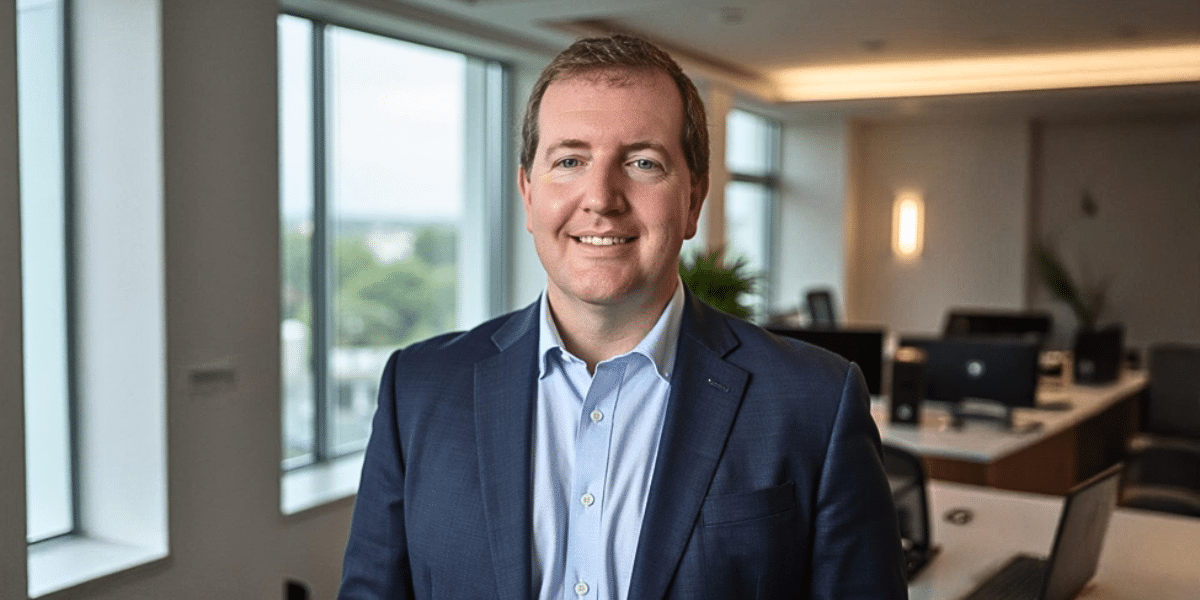By: Joshua Finley
With the rapid advent of AI and AI-driven technologies, the pressure on organizations to innovate has never been higher. For CTOs and CFOs, partnering to create flexible, scalable innovation models is key to staying competitive while managing costs and resources efficiently. Kenneth Harvey Dick, a reputable technology executive and leader in fintech and healthcare software, has spent over 20 years honing his craft and is passionate about driving innovation through collaboration.
His journey from humble beginnings in software gaming to becoming a Chief Technology Officer has given him a unique perspective on building successful teams and systems that can adapt to an ever-changing environment. Kenneth’s story illustrates that it’s not just about the technology—it’s about how it’s applied and how it solves real-world problems. Here are three strategies he shares for helping build this flexible partnership between CTOs and CFOs to drive innovation forward.
Cultivate an Innovation Mindset
Innovation isn’t something that happens overnight; it’s a mindset. Kenneth stresses the importance of creating a culture of continuous, incremental innovation within an organization. “Innovation should be woven into the fabric of your team,” he says. “It’s about making small adjustments, testing, and experimenting regularly. This way, you’re never stagnant and always moving toward improvement.” He believes that the innovations often stem from persistent experimentation and a willingness to make small adjustments rather than grand overhauls.
In his teams, he encourages an “innovation mindset,” where solutions to complex problems are approached with creativity and the flexibility to test new ideas regularly. “Small, consistent improvements may not seem significant at first, but over time, they compound and create larger, more impactful innovations.” This approach allows organizations to make meaningful improvements while keeping the momentum going.
This mindset is critical for CTOs and CFOs when developing products, services, or internal processes. By encouraging experimentation, the team remains open to change and can find cost-effective solutions that significantly impact business outcomes over time. Small, consistent improvements will compound into larger innovations that provide a competitive edge.
Leverage Data-Driven Decision Making
The next tip Kenneth offers is the importance of data in shaping decisions and measuring progress. Today, every business decision can—and should—be informed by data. Kenneth emphasizes that data-driven decision-making helps reduce the guesswork and allows teams to measure the effectiveness of their innovations. “Data removes the ambiguity,” Kenneth explains. “When you base decisions on data, you can measure results, understand your customer’s needs, and make informed decisions on whether to scale, adjust, or pivot.”
By collecting relevant metrics, businesses can evaluate the success of new initiatives and make informed decisions on whether to scale or pivot. “Data tells you if you’re on the right path. It’s not just about tracking numbers; it’s about using them to steer your strategy, making sure you’re investing resources wisely and moving in the right direction.”
For CTOs and CFOs working together, data becomes critical for balancing technological investments with financial goals. With proper data analysis, leaders can identify areas that need improvement, understand customer pain points, and ensure that innovation efforts align with the company’s strategic objectives. By making decisions based on real numbers, CTOs, and CFOs can ensure that resources are allocated efficiently and that the innovation is both impactful and measurable.
Make Software Impactful and Human-Centered
Kenneth’s final tip for building a successful innovation model focuses on the human aspect of technology. He believes that software should be designed with the user in mind, creating solutions that are not only effective but also intuitive and human-centered. “At the end of the day, technology exists to serve people,” Kenneth says. “Great software solves problems in a way that’s simple and intuitive. It should make users’ lives easier, not more complicated.” The innovations solve real-world problems by making processes more efficient and less time-consuming.
Kenneth challenges teams to consider how their innovations will improve users’ daily experiences, whether it’s helping a salesperson close deals faster or allowing an operations team to streamline workflows. “If your software doesn’t make the user’s job easier, then it’s not truly innovative—it’s just more noise.”
For CTOs and CFOs, ensuring that software has a clear, human-centered purpose is essential. “The financial side of innovation is just as important as the technological side. You need to make sure that every software solution is both human-centered and aligned with the business’s financial goals,” Kenneth advises. Software should be able to demonstrate measurable value by simplifying tasks and creating positive outcomes for customers and employees alike. By staying focused on real-world challenges, software development can directly impact business success, driving revenue, efficiency, and customer satisfaction.
A Look to the Future
Building scalable and flexible innovation models requires collaboration between technology and finance leaders. By leveraging data to guide decisions and focusing on creating human-centered software that delivers real-world value, Kenneth Harvey Dick is committed to making that happen. “It’s about balancing innovation with practicality,” he says. “CTOs and CFOs must work together to ensure that innovation remains a key driver of growth and success.”
By implementing strategies that bring CTOs and CFOs to work together, he believes organizations can continue to innovate in a way that builds sustainable business solutions. “The key is collaboration,” Kenneth concludes. “When both technology and finance are aligned, innovation becomes a force for lasting, impactful change.” To connect, visit Kenneth’s LinkedIn profile.
Published by Charlie N.

















